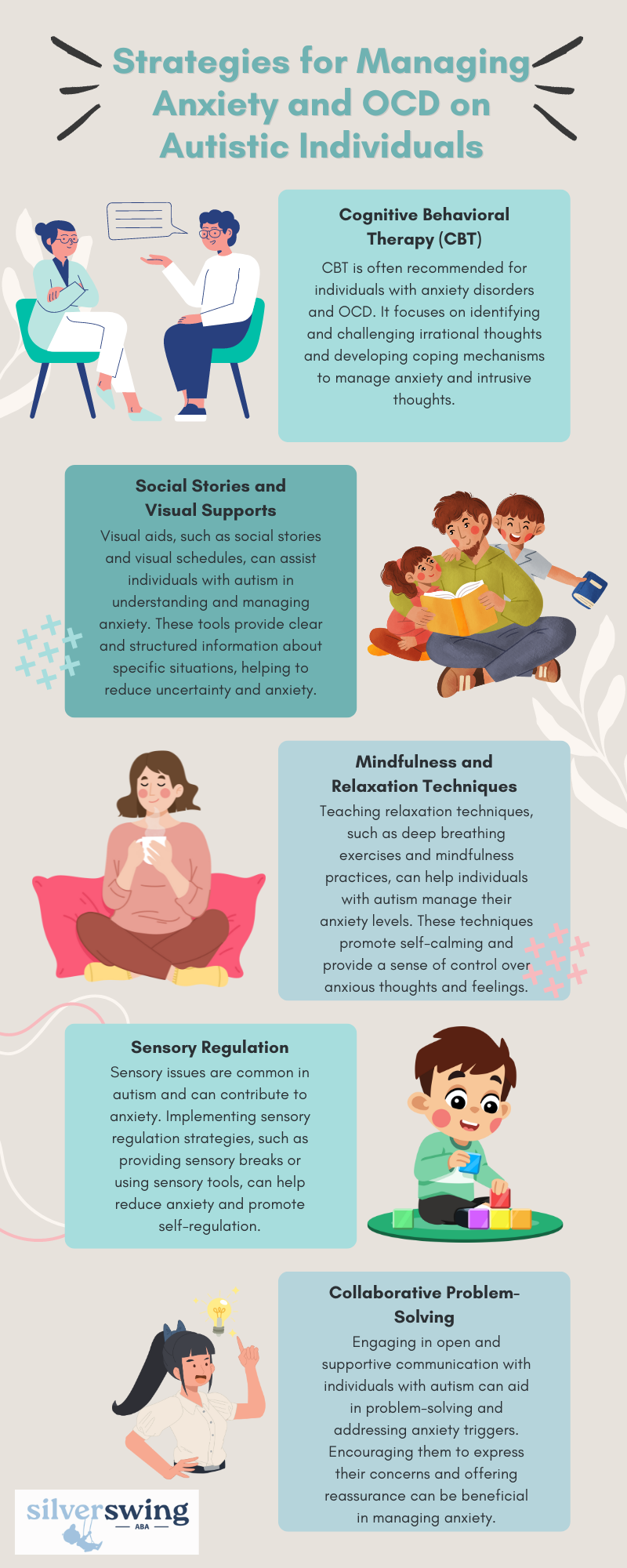Autistic individuals may exhibit unique cognitive patterns that influence their perception and processing of information. These thinking styles include visual thinkers, verbal/logic thinkers, music, math, and pattern thinkers, as well as bottom-up thinkers.
In this article, we’re going to look at various autistic thinking examples and figure out what they really mean.

Cognitive Processes in Autism
Understanding the cognitive processes in autism can provide valuable insights into how individuals on the spectrum think and process information based on the changes in their brains. In this section, we will explore three key cognitive processes often observed in autism.
Associative Thinking
Autistic individuals often exhibit associative thinking, where their thoughts connect in non-linear and sometimes seemingly unrelated ways. This type of thinking can be seen in visual thinkers who process information more in images than words, relying on photographic or near-photographic memories.
Associative thinking can sometimes lead to challenges in communication and understanding, as the connections made by individuals with autism may not follow a typical logical progression. This can result in confusion between teachers, peers, and even family members.
For example, an autistic individual named Jane may attempt to copy the content of group conversations and behaviors to fit in, even when at home with family. When the response she receives is not as expected, she may experience distress due to the misalignment of her associative thinking with the expectations of others.

Predictive and Sequential Thinking
Autistic individuals may experience difficulties in predictive and sequential thinking. This can impact their ability to organize, acquire self-help skills, be independent, or anticipate the consequences of their actions.
In predictive thinking, individuals are able to anticipate the outcomes or consequences of certain actions. Sequential thinking involves the ability to arrange thoughts or actions in a logical order.
Challenges in these areas can make it harder for individuals with autism to plan and navigate daily tasks and routines.
Logical Consistency and Problem-Solving
One notable cognitive strength in autism is the tendency to reason in a logically consistent manner. Autistic individuals often exhibit enhanced logical thinking, which can help offset a reduced inclination towards intuition and spontaneous decision-making.
This logical consistency enables autistic individuals to excel in problem-solving tasks, often performing up to 40% faster than the average population. They demonstrate decreased susceptibility to cognitive biases, such as the framing effect, where people’s decisions are influenced by how information is presented.
The ability to think logically and deliberately can be a valuable asset for individuals on the autism spectrum.

Temple Grandin's Cognitive Types
Temple Grandin, who is a renowned autism advocate, has also identified different cognitive types within the autistic community. These cognitive types provide insights into the unique thinking styles and strengths of individuals with autism.
Let’s explore three of these cognitive types which are as follows:
Visual Thinkers
Visual thinkers process information more in images than words. They often have photographic or near-photographic memories, and their thought process tends to be non-linear. This can sometimes lead to challenges in communication and understanding between visual thinkers and their teachers or peers.
Visual thinkers excel in processing information by thinking in pictures. They may have a remarkable ability to visualize concepts and situations. Their thinking is associative, rather than linear, and they categorize concepts by sorting pictures into categories, similar to organizing files in a computer.
This visual thinking style can provide a unique perspective and approach to problem-solving and creativity.

Verbal Specialists
Verbal specialists, also known as verbal/logic thinkers, have a particular affinity for language and logical thinking. They tend to learn and remember details that may seem unimportant or irrelevant to others. Verbal specialists often appreciate and excel in learning languages, making lists, and remembering facts and trivia about specific interests.
These individuals have a strong memory for verbal facts and enjoy organizing information in a structured manner. They may struggle more with visual thinking skills and imagery.
However, their interests in subjects like history, geography, or sports statistics can serve as motivation for their learning journey.
Pattern Thinkers
Music, math, and pattern thinkers have a natural inclination for recognizing patterns and finding connections in various aspects of life. They often have a deep appreciation for routines and may face difficulties when confronted with sudden changes or irregularities.
Pattern thinkers process information by recognizing patterns and relationships, particularly in the realm of numbers and abstract concepts. They excel in abstract thinking and can often spot patterns where others might not.
However, pattern thinkers may encounter challenges in areas such as reading comprehension and writing composition.

Impact on Mental Health
Unfortunately, individuals with autism may also experience unique challenges related to their mental health. The impact of autistic thinking styles can contribute to the development of various mental health conditions, such as anxiety disorders and Obsessive-Compulsive Disorder (OCD).
Understanding these challenges is crucial for providing appropriate support and management strategies.
Anxiety and OCD
Black and white thinking, which is a common thinking pattern in autism, can have a significant impact on mental health. This type of thinking involves seeing things in absolute terms, without considering shades of gray or alternative perspectives.
Black and white thinking can exacerbate anxiety and make it difficult to manage uncertainties.
In individuals with autism, black and white thinking can contribute to the development of anxiety disorders. The rigid thought patterns and difficulty in accepting ambiguity can heighten anxiety levels, leading to excessive worry and fear.
Moreover, this type of thinking can fuel intrusive thoughts, obsessions, and compulsions, particularly in autistic individuals with OCD.
Management Strategies
Managing anxiety and OCD in individuals with autism requires a comprehensive approach that considers their unique thinking styles and needs. Here are some strategies that can be helpful:

By adopting these management strategies, individuals with autism can develop effective coping mechanisms to navigate anxiety and OCD symptoms. It is important to remember that each person is unique, and tailored approaches should be implemented based on their specific needs and strengths.
By providing appropriate support, understanding, and resources, we can help individuals with autism thrive and lead fulfilling lives.
Sources:
https://psychcentral.com/autism/why-people-with-autism-are-more-logical
https://www.theyarethefuture.co.uk/autism-black-white-thinking
https://www.scottishautism.org/about-autism/about-autism/thinking-styles
https://theplaceforchildrenwithautism.com/autism-blog/thinking-and-the-autism-spectrum
https://embrace-autism.com/thinking-styles-in-autistic-people




